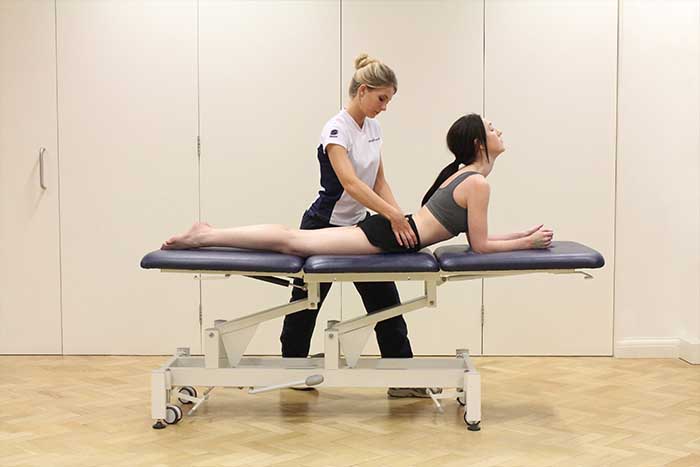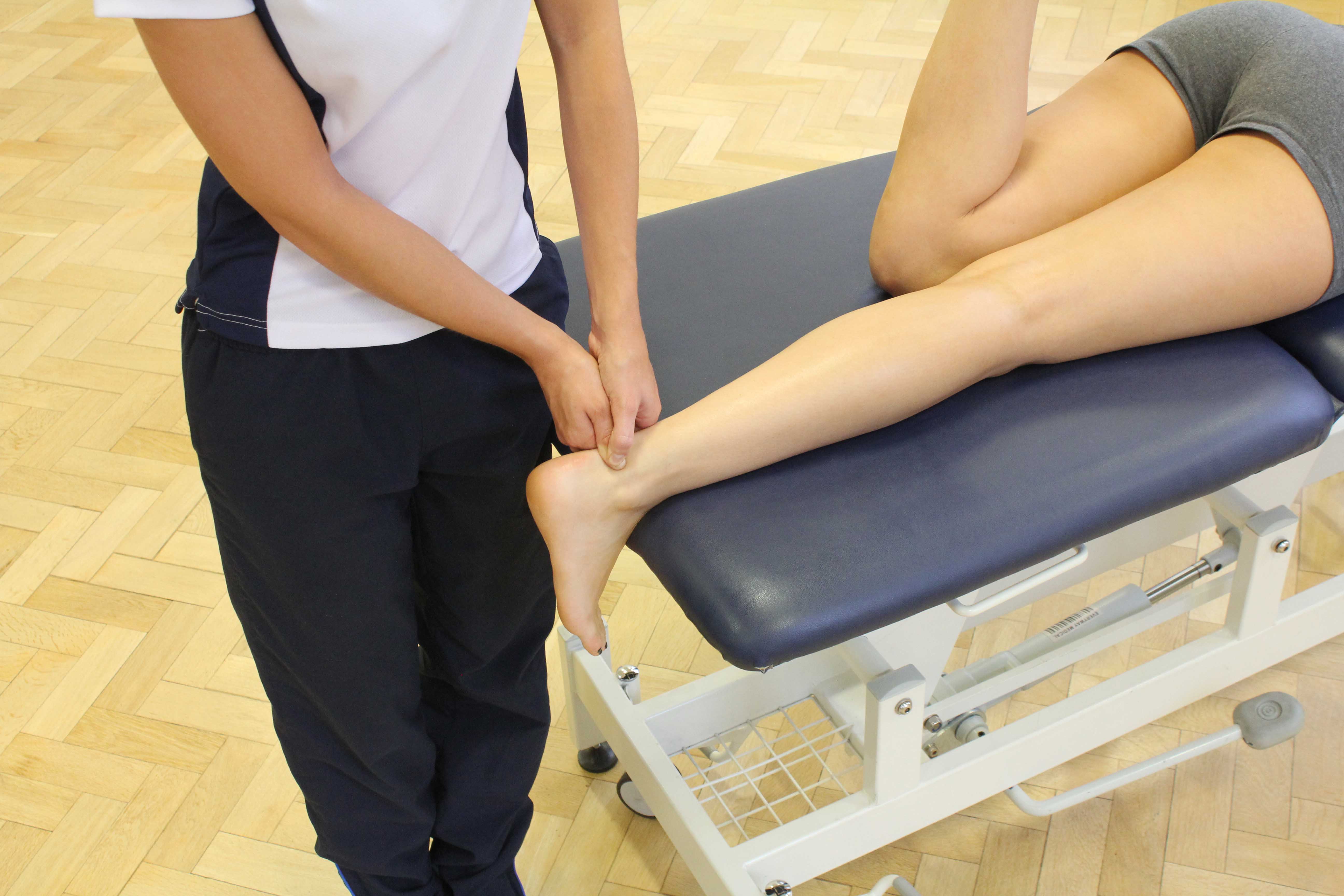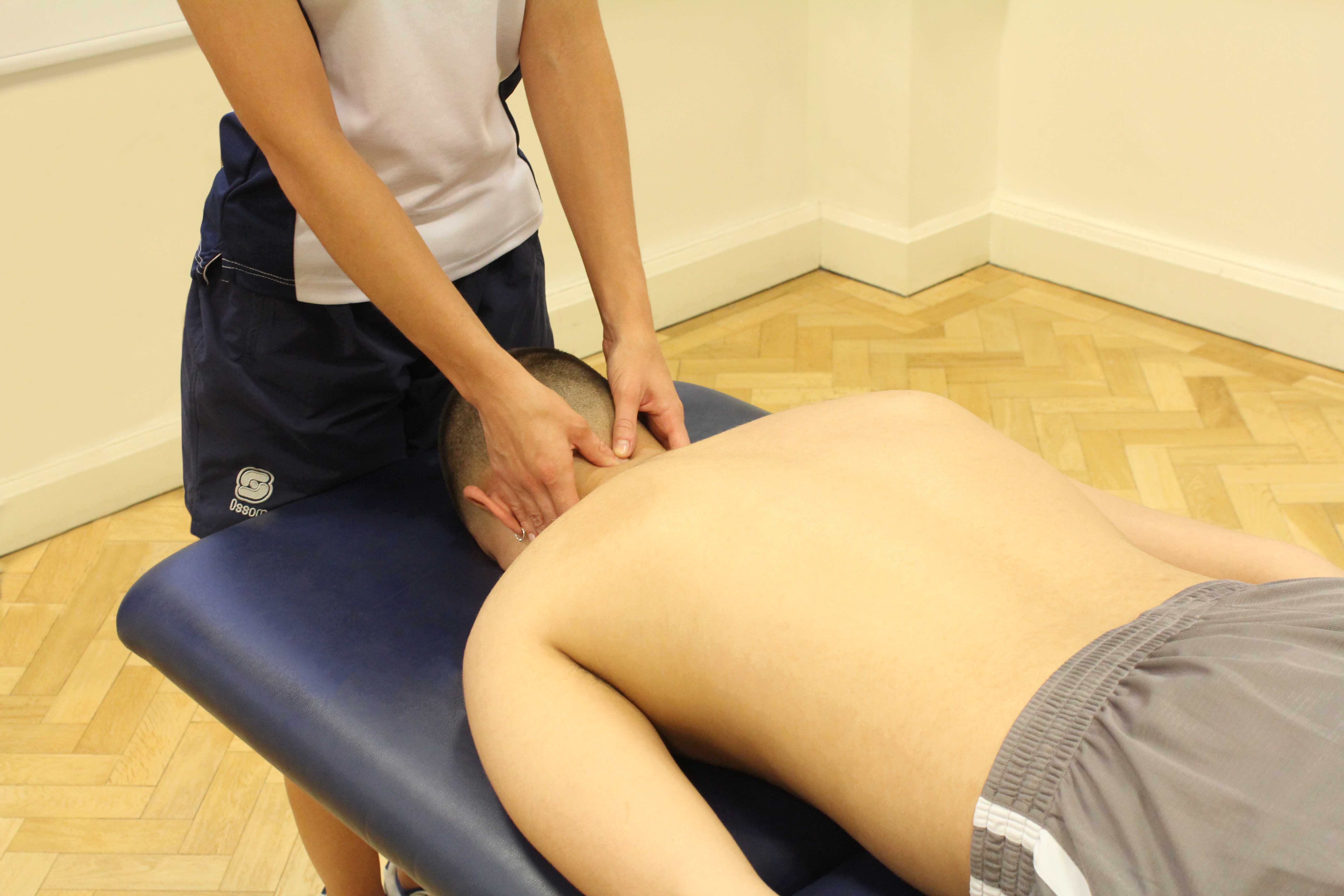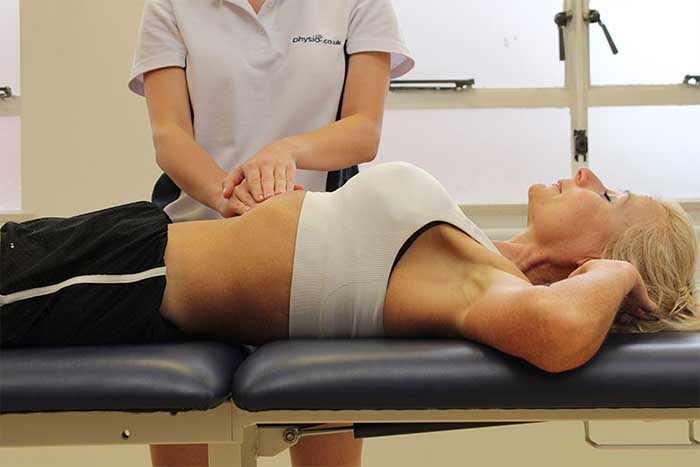Many people suffer from acute pain for various reasons. Types of acute pain include muscular ache, sharp pains or shooting pains. The most common causes of acute pain include injury, surgery, muscle overuse and muscular tension. Pain is created when receptors in the skin sense something is not right. The receptors then send a signal to the brain so that it can send a message to nerves. Nerves will then create a feeling of pain to stop or reduce the activity. Pain can cause stress levels to increase, relaxation levels to decrease and feelings of frustration or anxiety to arise due to the prevention of sport or exercise. Our massage therapists at Physio.co.uk use massage for acute pain to help improve relaxation and relieve symptoms of stress and anxiety.
What type of massage is used for acute pain?
There are many types of massage that can be used to treat acute pain. The types of massage used for acute pain are:

When can massage help acute pain?
Massage to treat acute pain can help on many circumstances. These circumstances include:
 Above: Transverse friction massage applied to the achilles tendon
Above: Transverse friction massage applied to the achilles tendonThe most common circumstances when massage for acute pain can help include post injury, tight muscles and post-surgery.
The effects of injury can be reduced when pain is relieved. After injury, soft tissues including muscle, ligaments, tendons and nerves are damaged causing pain to increase. High levels of pain after an injury can cause discomfort and stress. Pain is reduced through massage by encouraging healing to increase. A massage stimulates blood and lymph flow to increase around the injury site in order to provide essential nutrients for repair and remove metabolic wastes preventing healing. Repairing damaged soft tissues more quickly can increase relaxation and decrease stress. Increasing relaxation and decreasing stress all help to improve the effects of injury.
A massage for acute pain can help muscle tightness. A common cause of acute pain is muscle tightness. When muscles are tight, movement is restricted. A massage aims to relieve pain to help encourage and increase movement to relieve muscle tightness. A decrease in pain occurs when muscle elasticity and flexibility is improved this decreases muscle tightness. When some muscle tightness is relieved, pain reduces with it. Allowing movement to increase encourages muscles to stretch and loosen to further relieve muscle tightness.
Negative post-surgery effects can be reduced through massage for acute pain. Surgery can leave negative effects such as scarring, muscle tension and a buildup of metabolic wastes. A common condition caused by surgery is lymphedema. Lymphedema occurs when the lymphatic system is blocked causing metabolic wastes and excess fluids to build-up around an area. A buildup of metabolic wastes and excess fluids can cause pain to increase. A massage aims to stimulate the lymphatic system. Stimulation of the lymphatic system increases lymph flow, removing metabolic wastes and excess fluids more efficiently. Reducing metabolic wastes and excess fluids helps to decrease pain and therefore the effects of surgery.
 Above: Soft tissue massage and mobilisations applied to the cervical spine
Above: Soft tissue massage and mobilisations applied to the cervical spineWhat are the physiological effects of receiving a massage for acute pain?
Massage can produce many important physiological effects on the body. The physiological effects of massage for acute pain include:
A massage for acute pain involves an increase in temperature. Pain can be caused by muscle tightness or tension. Muscle tightness and tension restrict movement and often cause muscular knots. Muscular knots are bundles of muscle fibres that further restrict movement and increase pain. During a massage, friction created between the skin and fingers stimulate blood flow to increase. An increase in blood flow helps both superficial and deep layers of muscle tissues to increase in temperature. Increasing temperature aims to improve tissue elasticity and flexibility to allow a muscle to increase movement and relax. Relaxed muscles due to an increase in temperature, reduces muscle tightness and tension and therefore decreases pain.
A physiological effect of massage is increased capillarisation. Capillarisation is where an increase in capillaries form and surround a muscle. Capillaries provide an increased blood supply to muscles. It is common for pain to be caused by muscle fatigue or injury. An increase in blood supply through capillarisation can provide essential oxygen and nutrients used for increasing energy and the repair of damaged fibres. Increasing energy and repairing damaged muscle fibres contributes to a decrease in pain.
An increase in endorphins can occur within a massage for acute pain. Endorphins are neurotransmitters released from the brain. Endorphins are released in response to pain and stress. Endorphins help to relieve our feelings of pain by interacting with receptors on located on the brain and reducing our perception of the pain. As well as reducing pain, endorphins can give us our happy feelings whilst reducing stress levels. Reductions in stress can often further reduce pain.

What are the benefits of receiving massage for acute pain?
Massage to treat acute pain has many benefits. The benefits of massage include:
A benefit of massage for acute pain is reduced stress. Psychological stress is caused by a negative hormone, cortisol. Cortisol is released in response to pain and increases stress, anxiety and depression. Cortisol can also further increase pain which then, in turn, causes another rise in both stress and pain. When acute pain is reduced, the quantity of cortisol secreted into the body is decreased. Decreasing cortisol secretion helps to relieve feelings of stress and anxiety.
Relaxation is improved through massage for acute pain. Relaxation can be increased both physically and mentally. Physical relaxation occurs after a massage due to the reduction in muscle tightness and tension, allowing muscles to move more freely with no restriction or pain. Mental relaxation occurs due to the encouragement of the release of "feel good hormones". The feel good hormones consist of endorphins, serotonin and dopamine. Feel good hormones help increase relaxation, reduce stress and give a person a sense of well-being. When there is pain in a part of the body, mental relaxation is restricted causing stress and anxiety. Relieving pain allows the release of feel good hormones to increase to help relaxation improve.
Relieving pain through massage helps to reduce delayed onset muscle soreness. Delayed onset muscle soreness occurs anywhere between 24 to 72 hours after intense exercise or activity. Delayed onset muscle soreness is where muscle fibres gain microscopic tears due to muscle overuse and a buildup of metabolic wastes occur within the muscles causing muscle fatigue and weakness. One of the main factors of delayed onset muscle soreness is the increase in pain that occurs. Reducing pain can help relieve onset muscle soreness and encourage the repair of damaged muscle fibres.
Summary
Acute pain is the process of a stimulus that stimulates receptors in the skin to produce a feeling of pain in order to reduce or stop any activity involving the stimulus. There are a range of massage types used to reduce pain including instrument assisted soft tissue mobilisation, Swedish massage and therapeutic massage. Having a massage to reduce acute pain can help post injury, reduce muscle tightness and post-event. Various physiological effects occur during a massage for acute pain including increased capillarisation, increased temperature and increased endorphins. There are wide ranging benefits of a massage for acute pain, the most common being reduced stress, improved relaxation and reduced delayed onset muscle soreness. Our massage therapists at Physio.co.uk use massage for acute pain to help increase relaxation and increase movement.
When I am in acute pain how can I arrange a massage?
The easiest way to arrange a massage to treat acute pain at Physio.co.uk is to email us at office@physio.co.uk or call us on 0800 033 7800.
You can also book an appointment online and save £10

 0330 088 7800
0330 088 7800






































